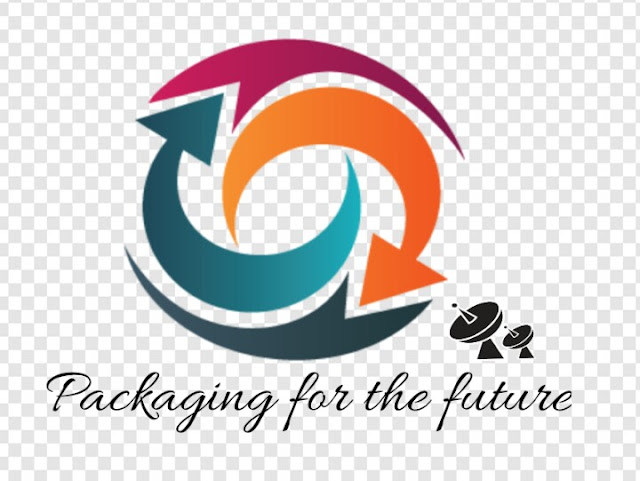Nursing Administration and Management 2
Exercise 1.1
What is Nursing Administration?
Answer:
It is both an art and science that engages leadership practice and values which influences the future and overseas health care delivery and inspires clinical practitioners and promotes health among individual, significant others, population and community.
OR
It is the blend of science and art that involves the application of leadership practice and values to influence the future, overseas health care delivery and inspire clinical practitioners and promote health among individual, significant others, population and community.
Exercise 1.2
Explain Nursing administration as an art.
Answer:
Nursing Administration as an art refers to the operational part of nursing administration. Hence, it is basically what the nurse administrator does.
OR
Nursing administration as an art is the ability to sense a situation, to respond to its nature and demands in terms of the inner or intuitive senses, which are capable of handling intangibles, rather than assessing by reason, analysis and logic.
Therefore nursing administration as an art promote positive outcome by fostering healthy work environment, ensuring adequate resources, leading effect change, collaborating with stakeholders and accountability and investing in the professional development of staff.
Exercise 1.3
Explain Nursing Administration as a science.
Answer:
Nursing administration as a Science employs concepts from basic physical and social sciences to advance optimal sustainable outcomes for education and healthcare delivery system.
Therefore, the scientific administration is the result of applying scientific knowledge and methods to different aspects of administration and the concerns that arise from them.
Exercise 1.4
Outline the responsibilities of the nurse administrator
Answer:
planning for total patient care
Selection of personnel and assignment of responsibilities.(having human resource function)
Organizational and clerical activities of nursing service
General supervision and disciplinary issues
Relation with other departments within the institutions
public relation
After care of patients
Shift development and welfare.
Regulation and licensing
Health education
Labour Unionism
Exercise 1.5
What's the different between scheme of work and conditions of work?
Answer:
Scheme of work refers to qualification each worker is to have to remain competent.
Exercise 1.6
Outline the Elements /Functions of administration by Henri Fayol.
Answer:
Forecasting (investigation) and Planning.
It involves setting a goal and devising measures or strategies to help you achieve these sets goals within a certain given time.
Within planning there is evaluation
Organizing
It involves Creation of department, hierarchy and reporting line within the organization
Commanding. (directing/ leading)
It Involves leadership, Communication, Motivation,
Coordinating (staffing)
It involves linking departments, activities towards the uniform goal of the institutions.
The issues of having dialogue and review are geared towards coordinating activities. Hence the absence of coordination brings about chaotic work force.
Controlling
It is the measure to deal with unplanned issues.
Hence it encompasses information, financial, human resource, procurement, product, and quality and risk management system and process control
Within controlling there is evaluation.
Exercise 1.7
Define the term Planning.
Answer:
Planning is about the formation of goals, adopting strategies, timing, and having alternative. It is basically the setting of objectives for a given period of time and having alternatives.
The process of planning covers a wide range of activities, all the way from initially sensing that something needs to be done to firmly deciding who does what and when.
All other management functions- organizing, staffing, directing and controlling- are dependent on planning.
Hence, the nurse manager needs to be familiar with the decision making process and decision-making tools so that she can identify the purpose of the institution; state the philosophy; define goals and objectives, outline policies and procedures; analyze, evaluate and design jobs; prepare budgets to implement her plans and manage her time and that of the organization.
Exercise 1.8
Outline the types of planning
Answer:
The first three are time and level related
Strategic planning
Involves long time planning for a period of five or more years and it is done at the highest level of decision making....with the aim of achieving the vision of the organization.
Tactical planning
It is between one and five years and it is taking at the middle level of management
Operational planning
It is just one year or three month with the aim of implementing the broad plans in their minute form.
Contingency planning
This is referred to as an alternative plan which is activated when actual plans fails.
Exercise 1.9
Outline and discuss the essential elements / characteristics / nature / features of planning.
Answer:
A nurse director can improve her ability to plan, to make decisions by asking herself two questions:
What are the elements of making a plan?
How are these elements actually carried out in an organization?
The four essential elements of planning are:
Diagnosing the problem
In making a diagnosis,
The nurse manager must identify and classify a problem or situation that needs improvement
The nurse director must locate the obstacles that stand in the way of achievements;
She should spell out the essentials of a satisfactory solution.
If there are critical restrictions on acceptable solutions, such as limits on money available or on personnel that may be used, she must also state them.
A good diagnosis says what is wrong, identifies the causes, gives the requirements for a satisfactory solution and indicates any significant limits within which the solution must be applicable.
Finding the most promising solutions
In finding alternative solutions, the nurse director must be concerned with what could be done to overcome the obstacles identified by her diagnosis.
This element requires imagination and originality.
The alternatives can range from doing nothing to finding a means around the difficulty or removing it, to perhaps modifying the objectives
Analyzing and comparing these alternatives.
The alternatives must be analyzed and compared.
Hence, if a choice is to be made among the probable plans, the primary differences have to be recognized and related with all pertinent data to provide a list of advantage and disadvantage of each alternative data.
Selecting the best plan.
Finally, the nurse director selects the best plan to be followed.
Consideration must be given to the differences in probabilities of failure and the chances of partial success of the chosen best plan.
Exercise 2.1
Outline the planning process
Answer:
The planning process is a cycle that involves the following
Environmental analysis
Forecasting
Setting goals
Listing or selection of alternative
Implementing plans
Monitoring and follow up
Evaluation
Exercise 2.2
Outline the importance of planning
Answer:
it provides direction
it reduces the risk of uncertainties
it facilities control
it provide basis for decentralization
It helps in coordination.
It facilities decision making
It prevents overlapping and waste.
it focuses attention on objectives and results (Goal oriented)
To provide for integration and co-ordination of organizational activities.
To permit considerable economy of managerial effort
Exercise 2.3
As a student you have been ask to draw the strategic plan for an organization.
Describe how you will go about it. (Using knowledge obtained from planning framework)
Answer
First, perform environmental scan / analysis.
Consider both internal environment and external environment factors that might affect the planning process and the actual plan.
Preview all the structures in the internal environment
Preview all external structures both micro and macro that you don't have control over.
Or better still perform SWOT analysis.
This involves looking at the:
Strength of the organization
This forms part of your internal environment.
Example:
High retention rate of stuff
High retention rate of stuff
Weakness of the organization
This also forms part of your internal environment.
These basically are the things that the organization does not have or lacks.
Example:
Lack of adequate number of doctors
Having dilapidated structures and equipment
Erratic power supply.
Stuff with very low morale.
Lack of adequate number of doctors
Having dilapidated structures and equipment
Erratic power supply.
Stuff with very low morale.
Opportunity available to the organization
These are things from outside which the organization can harness to their advantage.
They form part of the external environment
Threat.
This also forms part of the external environment
Examples
Delay in NHIS reimbursement.
Existence of strong competitors
Poor relationship between organization and community.
Secondly, Commence with formulation of goals and listing of alternatives for the plan.
This involves putting up a vision and mission statement, core values, strategies, policy guidelines.
It also involves looking up at the legal framework for the plan
Thirdly, implementation of well outline plan
This involves setting up programmes or priority.
Examples
To promote high standard in public health
To ensure quality diagnostic services
To attract and retain highly motivated stuff
This also involves a well outline specified activities for the Programme to be undertaken.
Examples
To attract or train specialist will fall under point 3.
To organize periodic in service training.
This also involves budgeting for each program and its outline activities
Fourthly, you consider the procedures or persons responsible
This involves considering and identifying both the primary responsibility and secondary implementer.
Finally, consider evaluation
This involves whether there are standards and whether people have deviated from their responsibilities.
Note:
Any identified threat that's is internal is a weakness. Therefore, threats are external.
Vision= what you want to become over the years.
Mission = what you are and what you aim at doing.
Read the limitations for exams.
Exercise 2.4
Outline the general limitation of planning
Answer:
The general limitations to planning are:
It leads to rigidity.
That is it makes every action of the organization a bit rigid
It may not work in a dynamic environment.
Hence planning is not feasible when the environment is fast changing or it is dynamic.
It reduce/ stiffs creativity.
This is because planning does not provide the room to be ingenious. Since actions are followed in a strict arrangement.
It is time consuming.
This is because you have to do a lot of analysis and consultations
It does not guarantee success
It does not project accurately into the future.
Exercise 2.5
Outline few external limitations to planning
Answer:
The external limitations to planning includes
Natural calamity
Example being in an environment of natural calamity such as flood will increase expenditure etc...Affecting an already well prepared plan.
Changes in competitor policy
Change in taste and market trend
If the taste if clients change and the organization does not meet up to it, there will be a problem.
Hence plans of organization become largely affected when taste and market trend changes
Change in technologies
Since technology changes very fast. There is the need to obtain the state of the art technology to meet up with technological demands.
In effect, this will hugely affect the organizational plans
Change in government or economic policies
Certain government policies has enormous influence on the plans of most private organization.
Hence making them to either change, modify or terminate their plans
Exercise 2.6
Describe the planning frame work.
Answer:
?
Exercise 2.7
Discuss the goals, targets and indicators of the SDGs
Answer:
?
Exercise 2.8
Compare and contrast mission and vision statement base on the following preamble;
Definition
Time
Function
Change
Answer:
?
DEFINTION
Talks about how to achieve your aim
Talks about what/where you want to be
ANSWER
It answers the question: what do we do.
It answers the question: where do we aim to be.
TIME
Talks about the present leading to the future
Talks about the future
FUNCTION
List the broad goal of the organization and how to achieve it
List the broad goals of the where the organization desires to be.
CHANGE
Can easily change
Is difficult to change
Exercise 2.9
Describe what is involved in Developing a Mission Statement and Vision Statement.
Answer:
?
DEFINTION
Talks about how to achieve your aim
Talks about what/where you want to be
ANSWER
It answers the question: what do we do.
It answers the question: where do we aim to be.
TIME
Talks about the present leading to the future
Talks about the future
FUNCTION
List the broad goal of the organization and how to achieve it
List the broad goals of the where the organization desires to be.
CHANGE
Can easily change
Is difficult to change
Exercise 2.9
Describe what is involved in Developing a Mission Statement and Vision Statement.
Answer:
?
Exercise 3.1
What are the similarities between mission and vision statement
Answer:
?
Exercise 3.2
Outline the Features of an effective mission and vision statements
Answer:
Issue of purpose, value and clarity is very important.
Exercise 3.3
Define the term Core values of an organization
Answer:
Core values of an organization
This constitute the foundations of the organization based on which work is performed and actions conducted.
It is the essence of the company's identify, and the principles, beliefs or philosophy of values.
It is the underlying competence that makes the company run smoothly.
Exercise 3.4
Outline the importance of core values to the organization.
Answer:
It provides framework for sound customer service
It ensures a conducive environment for job satisfaction
It help to differentiate one organization from another.
It is a framework for achieving the vision and mission of the organization
It fosters a sense of staff working life and how they fit in the bigger picture.
It serves as the primary recruiting and retention tool.
It shapes or informs the organizational culture.
It contributes to the overall success of the organization
It inspires people to action, communicate what is important and influence overall behavior
It dictates personal involvement and alignment
Exercise 3.5
State few examples of core values.
Answer:
Teamwork
Honesty
Excellence
Commitment
Recognition
Ownership
Customer service
Professionalism
Personal development.
Integrity
Loyalty
Satisfaction
Assertiveness
Effectiveness
Efficiency
Shared property
Responsiveness
Exercise 3.6
State and explain the five Foundation / pillars of planning.
Answer:
Planning is anchored on these five pillars:
Data
This is the basis for all planning.
Assumptions
These are hypothetical views needed for planning.
Direction
This is the framework for achieving a well set plan.
And it is the vision that gives the direction
Commitment.
This is the total involvement in the course of a plan.
Execution
This is the will power of actions needed to fulfill a set plan.
References
Sarwar K.B, Khatun M.R. Nursing Administration and Management. Bangladesh Open University,2007. 984-34-4025-0
Akerjordet K, Severinsson E (2010) The state of the science of emotional intelligence related to nursing leadership: an integrative review. J Nurs Manag 18(4): 363–82
Antrobus S, Kitson A (1999) Nursing leadership: influencing and shaping health policy and nursing practice. J Adv Nurs 29(3): 746–53
Bellack JP, Morjikian R, Barger S et al (2001) Developing BSN leaders for the future: the Fuld Leadership Initiative for Nursing Education (LINE). J Prof Nurs 17(1): 23–32
Bennis WG (1959) Leadership Theory and Administrative Behaviour: The Problem of Authority. Admin Sci Q 4(2): 259–301
Bowles A, Bowles NB (2000) A comparative study of transformational leadership in nursing development units and conventional clinical settings. J Nurs Manag 8(2): 69–76







Comments
Post a Comment